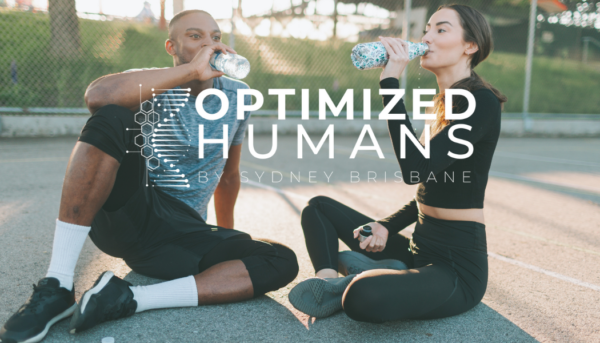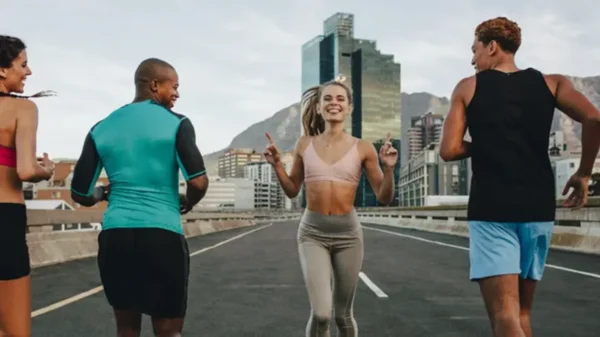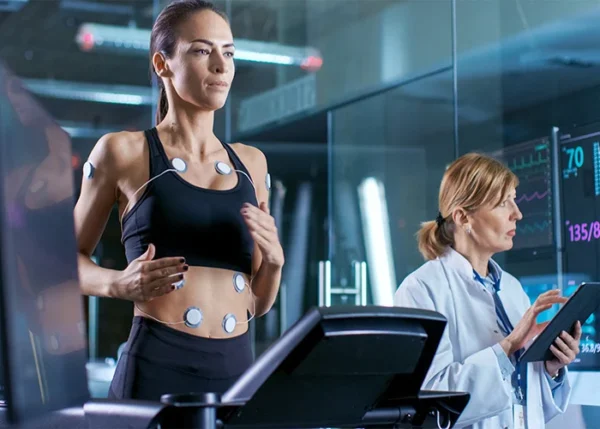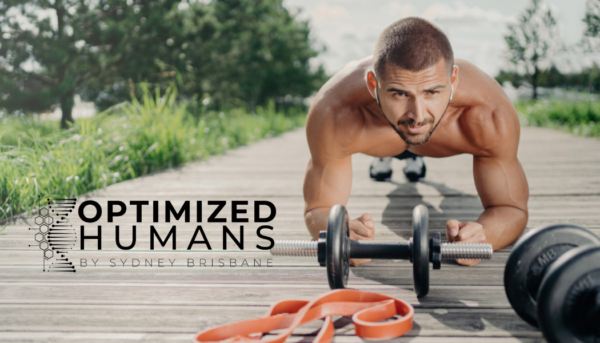As summer sets in, taking your workouts outdoors can be an invigorating way to enjoy the season while staying fit. Whether you’re running through the park, cycling along scenic routes, or practicing yoga on the beach, outdoor exercises offer a refreshing change from the gym. The Optimized Humans program is designed to help you make the most of your outdoor workouts, providing personalized guidance, tracking progress, and offering tips for various environments. Here’s how you can optimize your training with our program.
Benefits of Outdoor Workouts
Outdoor workouts come with numerous benefits that can enhance both your physical and mental well-being:
- Fresh Air and Sunshine: Exercising outdoors exposes you to fresh air and natural light, boosting your mood and providing essential vitamin D.
- Varied Terrain: Running or cycling on varied terrain can challenge your muscles differently, improving strength and endurance.
- Mental Health Boost: Nature has a calming effect, reducing stress and anxiety, and improving overall mental health.
- Engagement and Fun: Outdoor workouts can be more engaging and fun, keeping you motivated and helping you stick to your fitness routine.
Tips for Outdoor Exercises
To get the most out of your outdoor workouts, consider these tips:
- Plan Your Route: Choose safe and scenic routes for running, cycling, or walking. Familiarize yourself with the area and ensure it’s suitable for your fitness level.
- Dress Appropriately: Wear moisture-wicking clothing to keep cool and comfortable. Don’t forget a hat and sunglasses to protect yourself from the sun.
- Stay Hydrated: Bring water with you and take regular breaks to stay hydrated, especially during intense activities.
- Warm Up and Cool Down: Begin with a dynamic warm-up to prepare your muscles and end with a cool-down to prevent stiffness and soreness.
- Be Weather Aware: Check the weather forecast and plan your workouts accordingly. Avoid extreme heat and be prepared for sudden weather changes.
Optimized Humans: Your Outdoor Workout Companion
The Optimized Humans app is your ultimate companion for outdoor workouts, offering features that guide and track your progress in various environments:
- Personalized Workout Plans: The app creates customized workout plans based on your fitness goals, whether you’re focusing on cardio, strength, flexibility, or a combination of all three.
- GPS Tracking: Track your runs, walks, and cycling routes with GPS. The app logs distance, speed, and elevation, giving you detailed insights into your performance.
- Voice Coaching: Receive real-time coaching cues to keep you motivated and ensure you’re maintaining proper form. Voice coaching can also remind you to hydrate and take breaks.
- Progress Monitoring: Monitor your progress with detailed statistics and performance summaries. The app tracks your improvements and adjusts your workout plans accordingly.
- Community Challenges: Join community challenges and compete with other users. This adds a fun, social element to your workouts, keeping you motivated and accountable.
Outdoor Workout Ideas
Here are some outdoor workout ideas to try with the guidance of the Optimized Humans app:
- Running and Jogging: Use the app’s GPS tracking and voice coaching features to improve your running technique and endurance. Set goals for distance, time, or pace and track your progress.
- Cycling: Plan scenic cycling routes and monitor your speed, distance, and elevation. The app provides personalized cycling workouts to help you build strength and stamina.
- Bodyweight Exercises: Perform bodyweight exercises like push-ups, squats, lunges, and planks in your backyard or a local park. The app offers guided routines and ensures you’re performing each move correctly.
- HIIT Workouts: High-Intensity Interval Training (HIIT) can be done anywhere. Follow the app’s HIIT workouts that combine short bursts of intense exercise with periods of rest or low-intensity activity.
- Yoga and Stretching: Practice yoga and stretching routines on the beach, in a park, or in your backyard. The app provides guided sessions to improve flexibility and relaxation.
Conclusion
Optimizing your outdoor workouts with the Optimized Humans app ensures you stay fit, motivated, and engaged all summer long. By following personalized workout plans, tracking your progress, and utilizing the app’s features, you can enjoy the benefits of outdoor exercises while achieving your fitness goals. Embrace the great outdoors, breathe in the fresh air, and let the Optimized Humans program guide you to a healthier, happier you. Download the app today and take your workouts to the next level, wherever your adventures take you.
Exclusive OFFER For YOU!
Unlock your potential with a complimentary 14-day trial of our #OptimizedHumans program! 🚀 Dive into customized workouts, expert guidance, and transformative resources designed to enhance your physical and mental well-being. 💪 Join hands with Sydney and our dedicated team to embark on a personalized fitness journey tailored just for you. Together, we’ll optimize your health and set you on the path to success. Plus, discover how we collaborate with companies to boost employee efficiency through tailored workout and nutrition plans. Don’t wait any longer—start your journey to optimal living today at optimizedhumans.life!

As the summer sun blazes, your workouts might feel more intense, and your body will undoubtedly work harder. Proper post-workout recovery becomes even more crucial during hot weather to ensure your body recovers efficiently and remains injury-free. The Optimized Humans program offers expert advice and resources to help you optimize your recovery. Here are the best practices for post-workout recovery in hot weather, including stretching routines and nutrition tips available in our program.
Hydration is Key
One of the most important aspects of recovery, especially in hot weather, is staying hydrated. Your body loses more fluids through sweat, so replenishing these is essential.
1. Rehydrate Immediately: Drink plenty of water immediately after your workout. Aim for at least 16-24 ounces of water within the first 30 minutes post-exercise.
2. Electrolyte Balance: Consuming drinks with electrolytes can help replenish lost salts and minerals. Consider coconut water or specially formulated electrolyte drinks.
3. Monitor Your Hydration: Check the color of your urine; a pale yellow indicates proper hydration, while darker urine suggests you need to drink more fluids.
Effective Cooling Down
Cooling down helps bring your heart rate back to normal and prevents muscle stiffness. The Optimized Humans program offers guided cool-down routines to ensure you recover properly.
1. Gradual Cool-Down: Spend at least 5-10 minutes walking or performing low-intensity movements to gradually reduce your heart rate.
2. Static Stretching: Incorporate static stretches targeting the major muscle groups you worked during your exercise. Hold each stretch for 20-30 seconds to improve flexibility and reduce muscle tension.
3. Deep Breathing: Practice deep breathing exercises to promote relaxation and aid in the recovery process. This helps lower your heart rate and can reduce post-workout stress.
Stretching Routines for Optimal Recovery
Stretching is a crucial part of the recovery process, especially after intense workouts in hot weather. The Optimized Humans app includes comprehensive stretching routines designed to enhance recovery.
1. Full-Body Stretch Routine: Focus on a full-body stretching routine that targets all major muscle groups. This can help improve flexibility, reduce muscle soreness, and prevent injuries.
2. Yoga and Mobility Work: Incorporate yoga and mobility exercises to enhance your recovery. These practices help improve joint mobility, reduce muscle stiffness, and promote relaxation.
3. Foam Rolling: Use a foam roller to release muscle tension and improve blood flow to your muscles. The app provides guided foam rolling exercises for different muscle groups.
Nutrition for Recovery
What you eat after your workout plays a significant role in your recovery. The Optimized Humans program offers personalized nutrition plans to help you refuel and repair your body.
1. Protein Intake: Consume a protein-rich snack or meal within 30-60 minutes post-workout to support muscle repair and growth. Options include protein shakes, Greek yogurt, or a turkey sandwich.
2. Carbohydrates for Energy: Pair your protein with carbohydrates to replenish glycogen stores and provide energy for recovery. Good options include fruits, whole grains, and vegetables.
3. Healthy Fats: Include healthy fats in your post-workout meal to support overall recovery and reduce inflammation. Avocados, nuts, and olive oil are excellent choices.
4. Antioxidant-Rich Foods: Consume foods rich in antioxidants to combat oxidative stress caused by intense exercise. Berries, leafy greens, and nuts are great options.
Rest and Sleep
Adequate rest and quality sleep are essential for optimal recovery. The Optimized Humans program provides tips and techniques to improve your sleep hygiene.
1. Prioritize Sleep: Aim for 7-9 hours of sleep each night to allow your body to recover fully. Sleep is when your body repairs muscles, consolidates memory, and releases growth hormones.
2. Create a Relaxing Environment: Ensure your sleep environment is cool, dark, and quiet. Consider using blackout curtains, earplugs, or a white noise machine to enhance sleep quality.
3. Consistent Sleep Schedule: Maintain a consistent sleep schedule by going to bed and waking up at the same time each day, even on weekends.
Conclusion
Recovering properly after workouts, especially in hot weather, is essential to maintain your fitness progress and overall well-being. By following these best practices for hydration, cooling down, stretching, nutrition, and rest, you can optimize your recovery and continue to perform at your best. The Optimized Humans program is here to support you with personalized recovery plans, expert advice, and comprehensive resources. Embrace these recovery techniques to stay healthy, energized, and ready for your next workout, no matter how high the temperature rises.
Exclusive Deal For You!
Unlock your potential with a complimentary 14-day trial of our #OptimizedHumans program! 🚀 Dive into customized workouts, expert guidance, and transformative resources designed to enhance your physical and mental well-being. 💪 Join hands with Sydney and our dedicated team to embark on a personalized fitness journey tailored just for you. Together, we’ll optimize your health and set you on the path to success. Plus, discover how we collaborate with companies to boost employee efficiency through tailored workout and nutrition plans. Don’t wait any longer—start your journey to optimal living today at optimizedhumans.life!

As we peer into the not-so-distant future, the concept of fitness in the metaverse emerges as a fascinating, albeit perplexing, phenomenon. Are virtual and augmented reality (VR and AR) workouts truly the next frontier of fitness, or is this just another passing trend? The assertions about their growth in popularity in 2024 beg the question: can these immersive experiences genuinely redefine the way we approach exercise?
Immersive Fitness: A Game-Changer or a Gimmick?
The promise of a unique and immersive fitness experience is undoubtedly intriguing. The thought of donning VR headsets or engaging in AR-enhanced workouts brings a sense of novelty to the fitness realm. But, one might wonder, does the immersion translate to efficacy? Can these experiences genuinely rival the tangible benefits of traditional workouts, or are they more of a gimmick that appeals to our collective fascination with cutting-edge technology?
Accessibility for All: A True Game-Changer?
The assertion that VR and AR workouts can be accessible for people with disabilities or mobility issues raises essential questions about inclusivity in the fitness landscape. While the idea of breaking down physical barriers is commendable, one might ponder: do these technologies truly cater to the diverse needs of individuals with varying abilities? How seamless is the integration, and does it genuinely provide an inclusive fitness experience for everyone?
The Future: A Technological Triumph or Ethereal Experiment?
2024 is painted as the year when VR and AR workouts will thrive. Yet, we can’t help but question the long-term implications. Is this a lasting shift in the fitness paradigm, or are we witnessing an ethereal experiment that will fade away as swiftly as it appeared? Can virtual fitness truly replace the tangible connections forged in physical spaces like gyms and studios, or is it a supplement rather than a substitution?
In the metaverse, where the lines between reality and virtuality blur, the future of fitness appears to be both thrilling and enigmatic. As we navigate this uncharted territory, let’s question, explore, and critically assess whether the immersive promise of VR and AR workouts is a transformative leap into a new era of fitness or a fleeting mirage in the evolving landscape of wellness. Is this the dawn of a revolutionary fitness experience, or are we merely playing a captivating game within the metaverse? Only time will reveal the answers, and until then, let the questioning continue.

As we stride into the future, one trend that’s not just making waves but becoming an integral part of our daily lives is wearable technology. The popularity of fitness trackers and smartwatches is set to soar even higher in 2024, becoming indispensable tools for those keen on optimizing their well-being.
Smart Fitness Tracking
Wearable technology serves as a personalized wellness companion, allowing individuals to effortlessly monitor their fitness journey. From step counts to heart rate monitoring, these devices offer real-time insights into physical activity, empowering users to make informed decisions about their health.
Motivation at Your Fingertips
What sets wearable tech apart is its ability to keep users motivated. Whether it’s reaching daily step goals, beating a personal best, or receiving real-time workout feedback, these devices provide the encouragement needed to stay on track and achieve fitness milestones.
Healthy Habits, Intelligent Living
Beyond mere fitness tracking, wearable technology champions a lifestyle of intelligent living and healthy choices. These devices have evolved to encompass a holistic approach to well-being, seamlessly integrating into our daily routines and promoting healthier decisions.
Optimized Humans Fitness App Integration
In this era of tech-driven wellness, the Optimized Humans Fitness App takes the concept of intelligent living a step further. Seamlessly syncing with popular wearable devices, the app harnesses the power of fitness tracking technology to provide users with a comprehensive overview of their well-being journey. Real-time data from wearables seamlessly integrates into personalized workout plans, enabling users to set and achieve fitness goals with precision.
From step counts recorded by your favorite fitness tracker to heart rate data from your smartwatch, the Optimized Humans Fitness App transforms raw metrics into actionable insights. It’s not just a fitness app; it’s a digital wellness companion that applies the latest in wearable technology to empower users on their journey to optimal health. Embrace intelligent living and a tech-infused wellness experience with the Optimized Humans Fitness App—where the power of wearables converges with personalized fitness for a holistic approach to well-being.
In the realm of fitness trends, some stand the test of time, while others fade into obscurity as mere novelties. One such trend making an unexpected comeback is backwards running. What was once dismissed as a comical spectacle or a quirky joke has evolved into a legitimate and effective fitness practice. In this blog post, we’ll delve into the resurgence of backwards running, exploring its benefits, the science behind it, and why it’s no longer confined to the realm of amusement.
Breaking the Stereotype: Beyond the Laughs
Backwards running, long associated with comedy sketches or eccentric joggers, is shedding its comedic stereotype. Fitness enthusiasts and researchers alike are discovering that this seemingly backward approach to running has unique benefits that challenge the norm.
The Science of Retro Running: Unpacking the Benefits
Contrary to its lighthearted reputation, backwards running, or retro running, engages muscles differently from forward running. It activates the quadriceps, hamstrings, and calves in novel ways, contributing to improved muscle balance and strength. Moreover, retro running is a lower-impact exercise, reducing stress on the knees and joints, making it an appealing choice for individuals with joint concerns.
Coordination and Cognitive Boost
Backwards running isn’t just a physical exercise; it’s a mental challenge too. Navigating your surroundings in reverse requires enhanced coordination and cognitive engagement. This added mental component can contribute to improved spatial awareness, agility, and heightened cognitive function.
Incorporating Variety into Fitness Routines
The fitness landscape is evolving, with individuals seeking novel and engaging ways to stay active. Backwards running provides a refreshing departure from traditional workouts, injecting variety into fitness routines. As people look for unconventional yet effective exercises, retro running has become a standout choice.
Beyond the Gym: A Social Movement
What was once a quirky solo activity has transformed into a social movement. Backwards running clubs and events are emerging, bringing together enthusiasts who appreciate the physical and mental benefits of this unconventional exercise. It’s no longer just a joke; it’s a community-driven fitness movement.
Conclusion: Backwards Running: A Step in the Right Direction
As we witness the resurgence of backwards running, it’s clear that what was once dismissed as a mere joke has transcended its comedic roots. Embracing this unconventional approach to fitness is not about running backward in jest; it’s a deliberate choice driven by a desire for holistic well-being. The benefits, both physical and mental, coupled with the sense of community, are propelling backwards running into the limelight as a legitimate and effective fitness practice. So, lace up those shoes, turn around, and discover the unexpected joys of retro running—a fitness trend that’s no longer running away from serious consideration.

In a world where the pursuit of well-being often revolves around numbers—reps, sets, calories burned—it’s time to redefine our understanding of fitness. Welcome to the era where fitness transcends the mundane and transforms into an immersive experience. This blog explores the paradigm shift towards viewing fitness not just as a routine but as a journey—a holistic, sensorial, and deeply personal experience that goes beyond the confines of the gym.
The Evolution of Fitness: From Routine to Ritual
Gone are the days when fitness was a mere checklist of exercises. The contemporary approach embraces fitness as a ritual—a purposeful and dynamic experience that extends beyond the walls of a gym. It’s about intentional movement, mindful choices, and the integration of well-being into the fabric of daily life.
Mindfulness in Motion: The Present Moment Workout
The concept of mindfulness is seeping into every aspect of our lives, and fitness is no exception. The present moment workout is about immersing oneself fully into the exercise—feeling the muscles engage, savoring each breath, and relishing the rhythm of movement. In this experience-driven fitness journey, mindfulness becomes the guiding force, fostering a deeper connection between the mind and body.
Bridging Fitness and Fun: The Playful Workout
The rise of experiential fitness brings an element of playfulness to the workout routine. From dance-inspired classes to obstacle course challenges, fitness becomes an adventure—an opportunity to play, explore, and rediscover the joy of movement. This shift acknowledges that exercise doesn’t have to be a chore; it can be an exhilarating and enjoyable experience.
The Sensorial Gym Experience: Engaging the Senses
Experiential fitness engages all the senses, creating a sensorial symphony that elevates the workout experience. Whether it’s the aroma of essential oils in a yoga studio, the rhythmic beats of a curated playlist, or the tactile sensation of outdoor trail running, fitness becomes a multisensory journey that enlivens the spirit.
Community Connection: Social Fitness Experiences
Fitness is no longer a solitary pursuit; it’s a communal experience. The emergence of group workouts, fitness events, and online communities fosters a sense of connection and shared purpose. The social aspect of fitness becomes a driving force, transforming it from an individual endeavor into a collective journey.
The Wellness Fusion: Blurring Boundaries
Experiential fitness blurs the boundaries between traditional wellness practices. It’s not just about lifting weights or running miles; it’s about embracing a holistic approach that includes yoga, meditation, and nutritional mindfulness. The fusion of wellness practices creates a comprehensive and integrated experience that nurtures the body, mind, and soul.
Embarking on Your Fitness Odyssey
As we embrace the concept of fitness as an experience, it’s an invitation to embark on a personal odyssey—one that transcends the rigid confines of routine and embraces the dynamic, the mindful, and the joyful. Whether you find solace in the rhythmic flow of a dance class, the serenity of a yoga session, or the camaraderie of a group workout, remember that your fitness journey is uniquely yours. It’s a celebration of movement, an exploration of self, and a holistic experience that extends far beyond the parameters of sets and reps. So, lace up your sneakers, embrace the sensory richness of your workout, and let fitness become a transformative and joyous journey.

As we embark on the journey through 2024, one fitness trend stands tall, promising not just to endure but to thrive—strength training. While it has long been a staple in the realm of fitness, the projections for 2024 suggest a surge in its popularity. What propels this enduring fascination with lifting weights and resistance training, and why is strength training expected to claim an even more prominent spot in the fitness landscape this year?
The Unyielding Appeal of Strength
Strength training isn’t merely a passing fad; it’s a timeless pursuit grounded in the fundamental desire for vitality and resilience. The anticipation for its heightened popularity in 2024 prompts a contemplation: Is it the simplicity and efficacy of lifting weights that draws individuals in, or is there something deeper, something inherently satisfying about witnessing one’s physical strength evolve?
Beyond Muscles: The Holistic Benefits
The growing recognition of strength training’s myriad benefits contributes to its rising acclaim. It’s not just about sculpting muscles; it’s about enhancing overall health. Improved bone density, increased muscle mass, and better cardiovascular health are outcomes that resonate with a generation increasingly mindful of holistic well-being. The question arises: In a fitness landscape teeming with options, does strength training stand out as a foundational practice that transcends trends?
Versatility in Wellness
Strength training’s adaptability to various fitness goals further cements its relevance. Whether one’s aim is to lose weight, boost metabolism, or foster a resilient physique, strength training accommodates diverse aspirations. In an era where individuality in fitness pursuits is celebrated, the question lingers: Is strength training the common ground that unites the pursuit of varied wellness goals?
The Future of Fitness
As we delve into the heart of 2024, the resurgence of interest in strength training prompts contemplation about the future of fitness. Is this a reaffirmation of the timeless effectiveness of resistance training, or does it signal a deeper shift in our approach to physical well-being? Could it be that, in an age marked by technological advancements and ever-evolving fitness modalities, the simplicity and efficacy of strength training offer a grounding force that individuals seek?
Strength training, with its roots reaching back through the annals of fitness history, continues to captivate and evolve. The buzz surrounding its anticipated surge in popularity in 2024 invites us to reflect on the enduring appeal of lifting weights and the profound impact it has on our bodies, minds, and the very essence of our fitness journeys. As we navigate this year, one question resonates: Is strength training not just a trend but a steadfast companion in our pursuit of enduring health and vitality? Time will tell, and in the meantime, let the clink of weights be the soundtrack to a resilient and empowered year of fitness.
New Years Discount by Optimized Humans
To further ignite your fitness journey, Optimized Humans is offering an unprecedented 40% discount throughout the month of January. This exclusive offer ensures that you have access to top-notch coaching, personalized programs, and the revolutionary features of the app, all at an unbeatable value.
As of January 5, 2023 the CDC.gov announced 11.1 percent of U.S. adults have a mobility disability with serious difficulty walking or climbing stairs. 10.9 percent of U.S. adults have a cognition disability with serious difficulty concentrating, remembering or making decisions.
Mobility issues can encompass a wide range of conditions and causes, according to the World Health Organization (WHO), globally, an estimated 2.2 million people die each year as a result of physical inactivity, which can be a contributing factor for anyone with mobility issues.
In addition, falls are a common cause of injury and death among older adults, who may have mobility issues due to age-related conditions such as arthritis or osteoporosis. According to the WHO, falls are the second leading cause of unintentional injury-related deaths worldwide, with an estimated 646,000 deaths annually. So you can see statically immobility is an actual issue in adults and this process starts in our 30’s! The same time most of our hormones start to decline as well…but there is something we can do about it.
What is it?
Optimal Mobility allows you to take part in the activities that matter to you, without limitations. Most of us spend a sizeable chunk of the day sitting.
Think about it like this – you want to be able to climb up stairs, play with your grandkids, and maybe even bust a move on the dance floor without feeling restricted or uncomfortable.
Having optimal mobility means you can do all of these things and more, without any pain or discomfort. It’s like having a superpower that lets you do all the fun stuff you love, without any limitations. Over time, the body will take away any range of motion it doesn’t deem necessary. It’s the classic case of use it or lose it.
So, whether you’re looking to improve your flexibility, strength, or balance, there are plenty of ways to boost your mobility and keep your body feeling young and spry. Just remember to take care of yourself, stay active, and don’t be afraid to try new things. Who knows, you might just discover a new passion for salsa dancing or rock climbing along the way!
Why is it important?
Having limited mobility means that you’re not getting your joints in the optimal positions to create and absorb force. You’re not building strength as efficiently as you could. You’re forcing the joints to deal with stress in positions that you cannot get into without a compromise. And more likely than not restricting your ability to breathe at capacity.
Performance goes down, and the risk of injury goes up. Not only in sports, but also in day to day life. But, you may ask what is the actual risk for mobility decline?
How to get it?
Mobility is the basic functionality of movement. In our day to day family life, work life and moments of enjoyment we build up resilience to the need of stretching. Our bodies take the toll day in, day out without complaining until our bodies starts to tighten, ligaments become worn down until they just give out and affect numerous parts of the body.
Optimal Mobility is about decreasing your risk of injury and to perform at your highest level with confidence. Whether you’re playing with your kids or grandkids, going for a bike ride, surfing, or chasing your personal best in a marathon or tying your shoelaces. Optimal Mobility is the idea that you continue to work with your body in creating day to day routines that will allow you to age with flexibility, comfort and less issues in the back or knees.
How to keep it!
Optimal mobility is important for maintaining independence, reducing the risk of falls and injury, and improving overall quality of life. It also allows you to take part in the activities that matter to you, without limitations. It’s about decreasing your risk of injury and to perform at your highest level with confidence.
Having limited mobility means that you’re not getting your joints in the optimal positions to create and absorb force. Performance goes down, and the risk of injury goes up.
Optimized Humans app mobility standards are the foundation for a well functioning, optimized human.
Here are some tips and exercises to help you retain optimal mobility:
- Stay Active: Engaging in regular physical activity is key to maintaining optimal mobility. Exercise helps to improve strength, flexibility, and balance, all of which are important for mobility. Aim to get at least 30 minutes of moderate exercise, such as walking, swimming, or cycling, most days of the week.
- Stretching: Regular stretching can help improve flexibility and range of motion, reducing the risk of injury and improving mobility. Focus on stretching major muscle groups such as the hamstrings, quadriceps, and calves. Hold each stretch for 20-30 seconds and repeat on both sides.
- Strength Training: Strength training can help to improve muscle mass and strength, which is important for mobility. Focus on exercises that target major muscle groups such as the legs, back, and chest. Use resistance bands or weights to challenge yourself and gradually increase the weight or resistance over time.
- Balance Exercises: Improving balance is important for preventing falls and improving mobility. Examples of balance exercises include standing on one leg, heel-to-toe walking, and yoga.
- Cardiovascular Exercise: Aerobic exercise such as walking, cycling, or swimming can help to improve cardiovascular health and endurance, which is important for maintaining mobility.
- Posture Correction: Poor posture can lead to back pain and mobility issues. Focus on maintaining good posture throughout the day, especially when sitting or standing for extended periods.
Remember to always consult with a healthcare professional before starting any new exercise program. A physical therapist can also help you develop a personalized exercise program tailored to your individual needs and goals.
Can we help you?
Are you or someone you know struggling with mobility issues? Do you want to improve your physical health and fitness but don’t know where to start? Look no further than our team of health and fitness experts!
Our team understands the unique challenges that come with mobility issues, whether it be due to age, injury, or chronic conditions. We are committed to helping you overcome these challenges and achieve your health and fitness goals.
Working with us, you’ll receive personalized guidance and support every step of the way. We’ll work with you to develop a customized fitness plan that meets your unique needs and abilities. Our team will also provide education on proper form and technique to ensure you are exercising safely and effectively.
But we don’t just focus on exercise. Our team takes a holistic approach to health and wellness, addressing factors such as nutrition and stress management that can impact your overall well-being.
With our expertise and guidance, you’ll not only improve your mobility and physical health, but you’ll also boost your confidence and quality of life. Don’t let mobility issues hold you back any longer. Contact us today to start your journey to a healthier, happier you!
Many people ask me for advice on which training program they should start training with. With the rise in popularity of powerlifting in recent years, there has been a profusion of routines that can clutter and overwhelm a beginner who just simply wants to get going on their path to superhuman strength.


